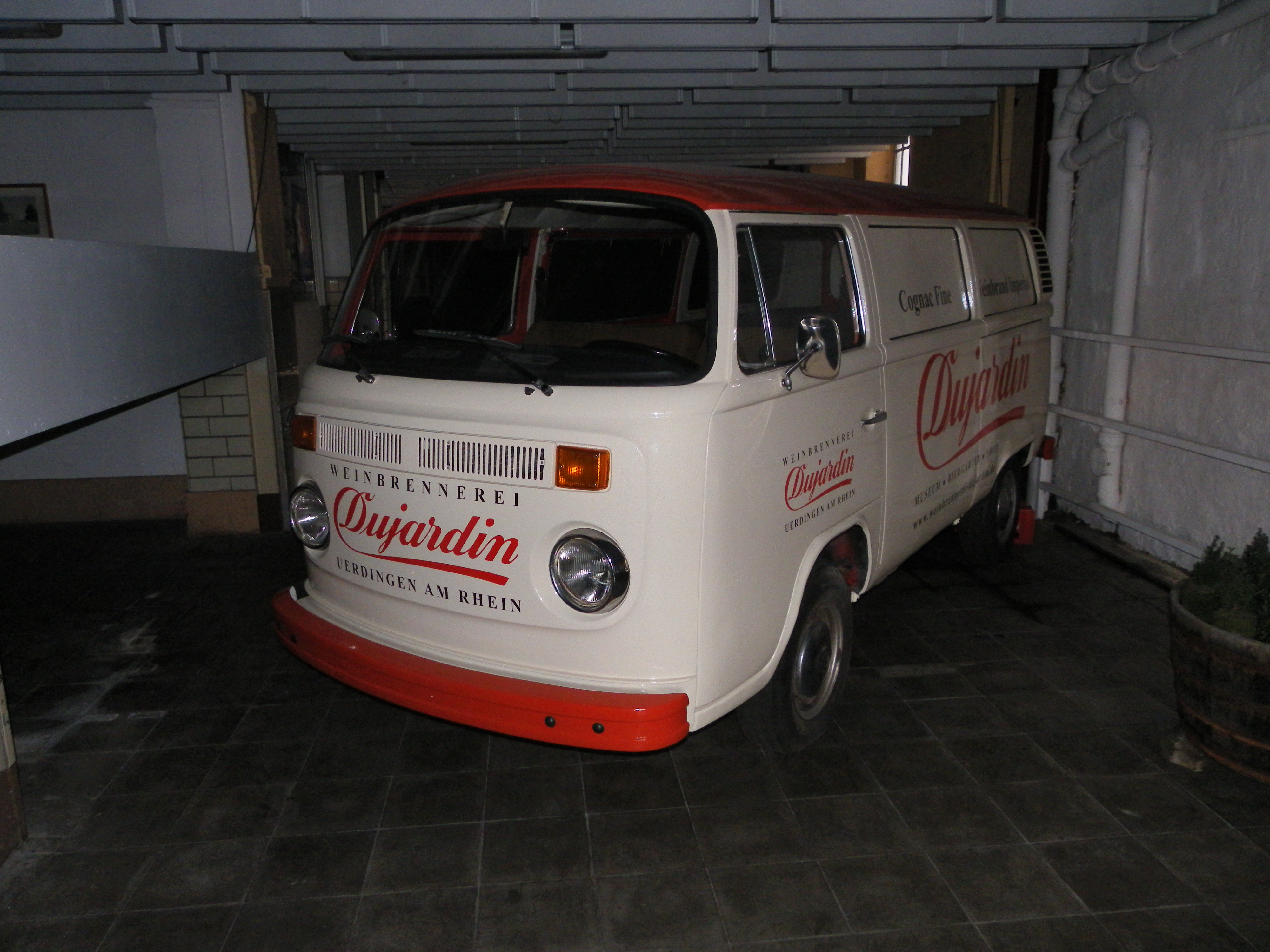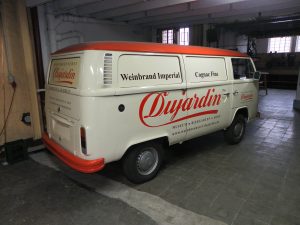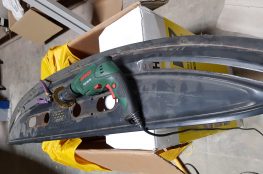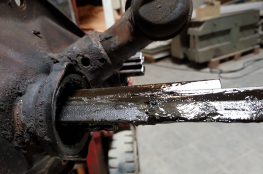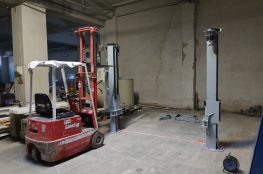Which Car? Welcher Wagen?
The decision was made. I will convert a car.
But which car. This is a difficult question because of many restrictions in Germany, limited funds, and limited love for modern cars. I love working with air cooled VW’s though, so here it is:
a VW Van form 1972
Die Entscheiung ist engültig. Ich baue ein EV. Das Baujahr muss vor 2003 liegen, da ich sonst “Elektromagnetische Verträglichkeit” nachweisen muss (die 3000 Euro spare ich mir). Ausserdem liebe ich luftgekühlte VW. Also:
ein VW Bus, Baujahr ’72
Not only is it beautiful, it also has extremely simple technology, very low weight, and a lot of extra load it can carry.
The car was easily found for a few bucks. Someone wanted to put a Porsche engine into it but gave up. It’s in pretty mediocre condition, but has no engine (like I care…).
Er ist nicht nur hübsch anzusehen, sondern wiegt fast nichts, kann aber viel laden, und hat sehr einfach zu verstehende Technik.
Gefunden habe ich den Wagen online, ohne Motor (der Vorbesitzer wollte einen Porschemotor einbauen, hat aber aufgegeben). Zustand OK.
Which Motor? – Welcher Motor?
Knowing my car of choice, I needed to decide for a motor. There are basically two choices: AC or DC.
AC motors have three “pins” and need three phases that must be generated by the controller. They work without brushes and are pretty much indistructable. They are great for recuperating energy when breaking. Unfortnately, it has less torque at low RPMs, and the controller would tripple in price.
DC motors have two contacts and need simple battery energy. They are less expensive and have full torque almost from the standstill. Plus the controler is much cheaper.
Sounds like a no-brainer? Well, it’s not. If you decide for expensive batteries, regenrative breaking in the AC system can save you 10% to 20% in energy, which means a smaller battery pack, less weight, less cost.
Nevertheless I decide for DC because it is simpeler for a first conversion. Maybe the next car?
Die wichtigste Frage ist: Geichstrom oder Drehstrom? Gleichstrommotoren haben irres drehmoment von Null an, einen simplem Controller, und sind auch noch billiger. Drehstrommotoren sind aber leichter und erzeugen Energie beim Bremsen. Zwar ist der Drehstrommotor billiger, dafür aber der Controller viel teurer. Durch die Energierückgewinnung kann eine moderne Batterie 10 – 20% kleiner dimensioniert werden.
Ich hab mich dann für Gleichstrom entschieden. Zumindest für den ersten Umbau.
Which Battery Technology? – Welche Batterien?
There are tons of different battery types out there by now. You can easily spend 15.000 Euros on a powerful and quickly rechargeable pack.
To me, this was the point where I had to take a close look at my driving habits: I have a great “main” car which I use to take the kids to school. The van would be driven mainly for the other days and for advertising, to local markets and shows. That means rare driving, little range requirements, no freeway.
So I decided for the cheapest batteries I could get: a deep cycle lead acid set. Maintenence definately required. Horrible charge duration, and low range. But should I decide to upgrade later, returning the lead acids won’t hurt too much, plus they are 99% recycleable.
Inzwischen gibt es viele und sehr gute Batterietypen auf dem Markt. Hier kann man locker 15,000Euro ausgeben, hat dann aber auch ein vollwertiges Auto.
Dieser Wagen aber fährt drei mal die Woche 20km weit. Da reicht auch was einfaches. Also habe ich mich für Blei-Säure entschieden. Das werde ich sicherlich noch bereuen, aber jetzt war’s erstmal die günstigste und schnellste Lösung.
What Periphery? – Das Drumherum
There are so many additional little things that will come up during the build. I’ll just make a quick list here:
- how to charge
- where to charge
- how to refill acid in the batteriy pack
- what controller
- what voltage
- how many amps
- what wiring
- where to get 12V for light and sound
- fuses, contactors, pre charge resistors, displays, wires, crimps
I must be nuts!
Naja, und dann sind da noch die vielen kleinen Entscheidungen, z.B.
- welches Ladegerät
- wo kann ich laden
- wie halte ich das Wasser in den Säurebatterien
- welcher Controller
- wievile Volt, Watt, Amperestunden
- Kabelsalat
- wo bekomme ich 12V für das Licht her
- Sicherungen, Schütze, Widerstände, Anzeigen, Drähte, Klemmn, …
Ich muss wahnsinnig sein…

